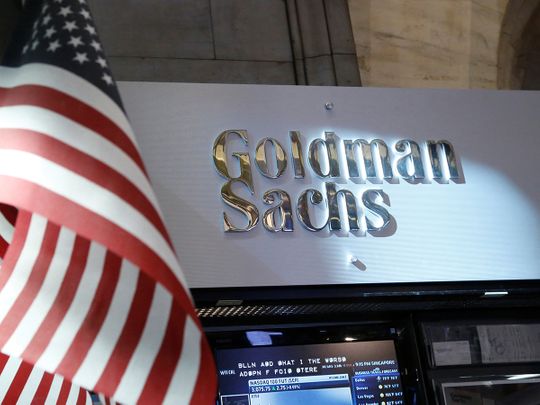
Goldman Sachs Group Inc. has put together $21 billion for private credit wagers, its biggest war chest yet for Wall Street's buzziest asset class.
The firm just closed the latest iteration of its direct-lending fund, drumming up firepower that includes fresh capital, borrowed funds and co-investments. That along with separately managed accounts will be put to use making more directly negotiated senior loans.
For money managers looking to expand, private credit has become one of their favorite calling cards. For Goldman, it takes on added importance, as it needs to prove it can rapidly raise mountains of money from outside investors, seeking steady fees over the big bursts of revenue once generated by wagering its own money.
Marc Nachmann, in charge of Goldman's money-management operations, has been logging flight hours to reel in cash around the globe "- from pension funds and insurance companies to sovereign wealth funds.
"I'll go anywhere in the world where people want to talk to me," Nachmann said in an interview. "They all view this as a super interesting asset class. When you go back 10 years, none of them had big allocations to direct lending."
The latest fundraising marks the fifth iteration of the firm's Loan Partners fund, a series that got off the ground in 2008. The haul includes $13.1 billion of equity capital, long-term financing as well as some of Goldman's own balance sheet deployed alongside the commitments.
The firm also scored $500 million in co-investment vehicles that will deploy cash alongside the fund and $7 billion in separately managed accounts for the same senior-secured, direct lending strategy. Such accounts have been gaining popularity as they typically offer large capital allocators better terms and more tailored services.
It's a chance for Goldman to show more clients that the firm known for a willingness to lock up some of its own cash when spotting an opportunity will now do it with others' money "- akin to a Blackstone Inc.
"We've not had as much time with some of these investors as some other alternative players have," Nachmann said. "You are asking people to trust you that I'm going to spend the next three to five years investing your money. It's a very long-term commitment and getting that trust takes some time."
Unnatural partnerships
But compared with many other banks, Goldman is a veteran in the niche of private credit. Its current target is to more than double those assets to $300 billion within the next five years. Investors shouldn't assume that newer entrants will have the same expertise when tackling such a complex market, said Greg Olafson, the head of Goldman's private-credit business.
"This is like a high-touch business, it's high-touch on origination, it's high-touch if anything happens," he said. "They don't have the teams nor the experience. And so what are they gonna do?"
One nascent trend among banks has been to pair up with money managers. "There are unnatural partnerships being formed," Olafson said.
"They are trying to emulate what we have over a 30-year period," he said. "They'll find that challenging."
JPMorgan Chase & Co. has earmarked more than $10 billion of the firm's balance sheet for direct lending and is trying to put together a partnership with asset managers to join it in private credit deals. Meanwhile, its asset-management unit is on the hunt to acquire a firm that operates in the space.
Others, such as Wells Fargo & Co. and Barclays Plc, have also formed tie-ups hoping to originate deals that their partners can take on.
Ultra wealthy
Beyond institutional investors, Goldman also found willing buyers in third-party wealth channels, as well as among the ultra-wealthy it already serves, with an average account size of about $70 million.
These high-net worth individuals are in a way "acting, from an asset-allocation perspective, very similar to some of the institutions," Nachmann said. "They've continued to increase allocation to alternatives."
Ultimately, outcomes among money managers will diverge, as borrowers that long enjoyed low interest rates confront the burden of higher borrowing costs.
"The last 10 years have been a very benign environment, you didn't see much dispersion in people's returns on credit because everything kind of worked," Nachmann said. "It'll be more interesting going forward."










